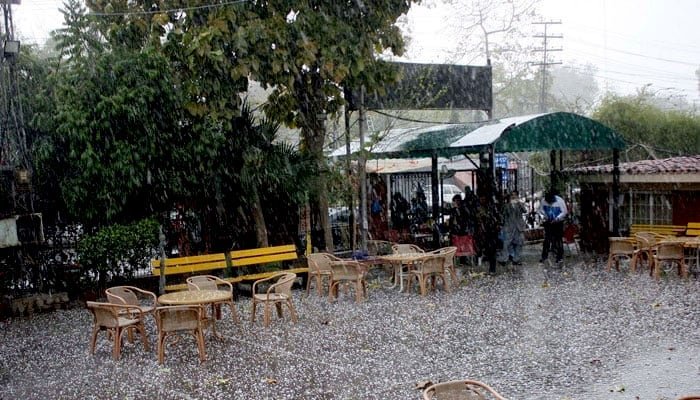Here’s a natural and coherent rephrasing of the article, maintaining the original meaning and tone:
Pakistan can expect a break from the recent heatwave as the Pakistan Meteorological Department (PMD) has predicted rain, thunderstorms, and dust storms, potentially with isolated hailstorms, across the northern and central regions of the country from June 13th to 16th.
The PMD stated that moist air currents are moving into the upper parts of Pakistan, and a westerly weather system is anticipated to arrive around June 13th. This shift in weather patterns is expected to bring relief from the intense heat.
Specifically, the PMD forecasts dust storms and rain with thunderstorms, possibly including hail, in areas like Kashmir, Gilgit-Baltistan, and popular hill stations such as Murree, Galliyat, Chitral, and Swat, along with surrounding districts, between June 13th and 16th, though the weather might not be consistently bad throughout that period. Similar conditions, including gusty winds, are expected in Islamabad, Rawalpindi, Lahore, Faisalabad, Sialkot, and Gujranwala during the same timeframe. Southern Punjab and upper Sindh are also likely to experience dust storms and thunderstorms.
The PMD cautioned that strong winds, hail, and lightning could cause damage to infrastructure like power poles, solar panels, vehicles, and trees, particularly in exposed locations. The public is advised to exercise caution and avoid being outside unnecessarily during these stormy conditions.
Farmers are encouraged to adjust their farming practices in response to the changing weather, while tourists and travelers should take appropriate safety precautions. Local authorities are urged to remain vigilant and prepared to minimize any disruptions or damage during the forecasted period.
This welcome change follows a severe heatwave that saw temperatures in Lahore soaring to a scorching 50 degrees Celsius, with the perceived heat intensity reaching as high as 60°C. The PMD had warned that the heatwave was expected to persist for another 24 hours, with the possibility of temperatures rising further. The intense heat was attributed to a prolonged dry spell throughout May and June.


